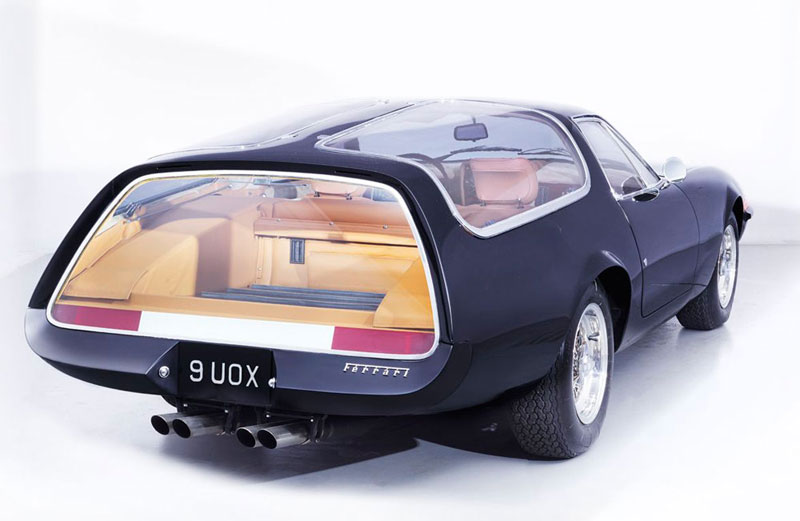Photo credit: Gooding
Luigi Chinetti was a precious man for Enzo Ferrari: a famous driver who was also very well connected within the American world of racing and luxury cars, he was Ferrari’s official importer for North America before the Company set up its own subsidiary, and also ran semi-official cars in the colours of his racing team, NART (North American Racing Team). His son, Luigi junior, who everyone called “Coco”, continued to work in the automobile world and created several singular and particularly interesting cars by transforming stock Ferrari models into something unique. These included a series of Shooting Brakes inspired by the needs of rich (and noisy…) hunters because they were ideal for transporting rifles and hunting game.

We presented the first example, a 330 GT 2+2 “rebodied” by Vignale on 2nd October, and today we present a second one, a 1972 365 GTB/4 Daytona, chassis #15275, which was the creative product of a renowned American designer: Bob Gittleman.

For the construction, Coco commissioned Panther Westwinds, a British luxury car manufacturer based in Surrey and run by Robert Jankel, which was renowned for the quality of its workmanship. Combining the original structural layout and performance of the Daytona with a design that takes full advantage of the luxurious effect provided by large glass surfaces, the car more than met the expectations of its customer.

The large non-opening rear window, the rear cargo area that was now accessible through twin upward-opening “gullwing” style glass panels and a completely new interior with the instruments of the Daytona repositioned on the central stack within a richly trimmed, wood-faced dashboard, are all very distant from anything that has ever left the factory gates at Maranello. The car, which is part of a collection, last changed owners in 2016 at a price of €548,000.
